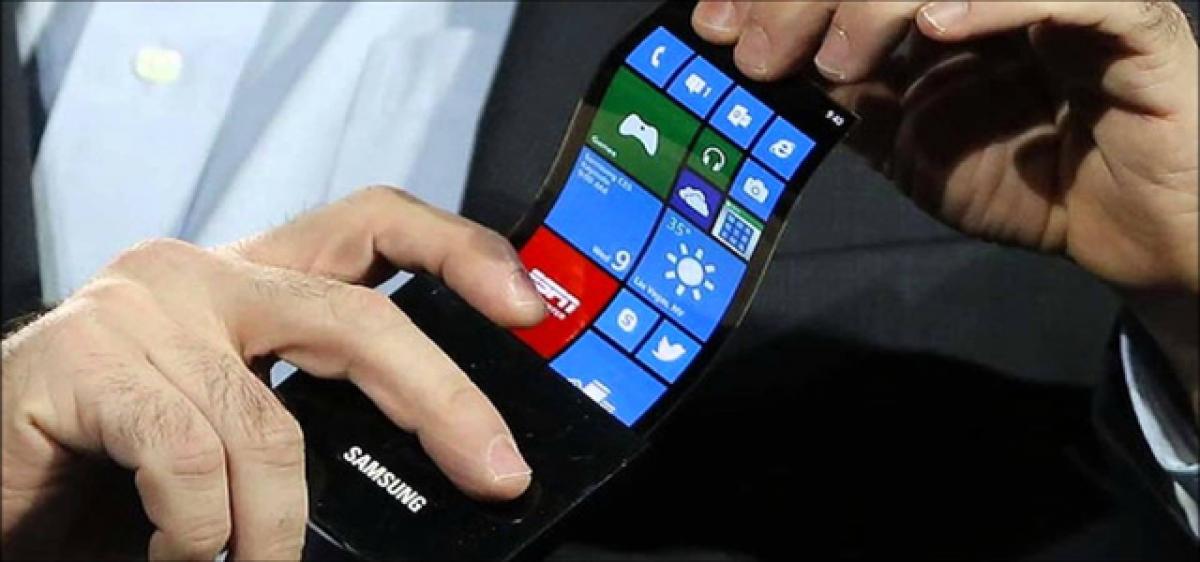Live
- ‘Iktaaraa Bole’ a collection of satires launched
- Illegal construction threatens Arkavathi River
- Aditya student bags prize in boxing competition
- Three women drown at swimming pool in resort
- Steel factory dust damaging crops, farmers in distress
- ‘Pushpa 2-The Rule’ Trailer: Allu Arjun's Swag and Fahadh Faasil's Intensity Steal the Show
- It’s time to cleanse your body with Ancient Lung Detox Drinks
- Jyotika Slams Negativity Surrounding Suriya’s ‘Kanguva’
- Indian Stock Market Faces Correction: Nifty, Sensex Hit by Inflation & Weak Earnings | November 2024 Update
- Rishab Shetty’s ‘Kantara: Chapter 1’ Set for Dussehra 2025 Release
Just In

Scientists are developing a new electronic \"paper\" - ultra-thin, flexible displays that are highly energy efficient and work well even in bright light, such as out in the Sun. Less than a micrometre thin, bendable and giving all the colours that a regular LED display does, it still needs ten times less energy than a Kindle tablet, researchers said.
London: Scientists are developing a new electronic "paper" - ultra-thin, flexible displays that are highly energy efficient and work well even in bright light, such as out in the Sun. Less than a micrometre thin, bendable and giving all the colours that a regular LED display does, it still needs ten times less energy than a Kindle tablet, researchers said.
The best application for the displays will be well-lit places such as outside or in public places to display information, they said. This could reduce the energy consumption and at the same time replace signs and information screens that are not currently electronic today with more flexible ones, they said.
Andreas Dahlin and Kunli Xiong from Chalmers University of Technology in Sweden, who were working on placing conductive polymers on nanostructures, found that the combination would be perfect for creating electronic displays as thin as paper.
"The 'paper' is similar to the Kindle tablet. It isn't lit up like a standard display, but rather reflects the external light which illuminates it," said Dahlin. "Therefore it works very well where there is bright light, such as out in the sun, in contrast to standard LED displays that work best in darkness," he said.
"At the same time it needs only a tenth of the energy that a Kindle tablet uses, which itself uses much less energy than a tablet LED display," he added. It all depends on the polymers' ability to control how light is absorbed and reflected.
The polymers that cover the whole surface lead the electric signals throughout the full display and create images in high resolution. The material is not yet ready for application, but the basis is there. The team has tested and built a few pixels.
These use the same red, green and blue (RGB) colours that together can create all the colours in standard LED displays. The results so far have been positive, what remains now is to build pixels that cover an area as large as a display.
"We are working at a fundamental level but even so, the step to manufacturing a product out of it shouldn't be too far away," Dahlin said. One obstacle today is that there is gold and silver in the display, which makes the manufacturing expensive.
"The gold surface is 20 nanometres thick so there is not that much gold in it," said Dahlin. "But at present there is a lot of gold wasted in manufacturing it. Either we reduce the waste or we find another way to decrease the manufacturing cost," he said.

© 2024 Hyderabad Media House Limited/The Hans India. All rights reserved. Powered by hocalwire.com







